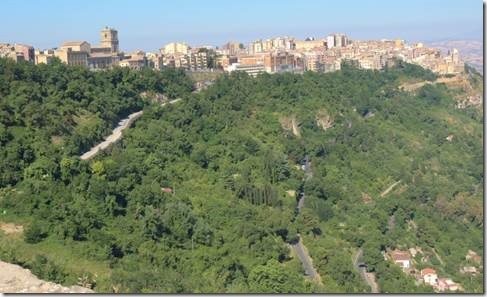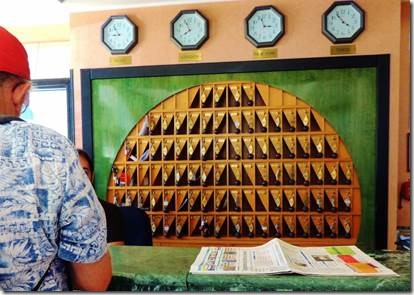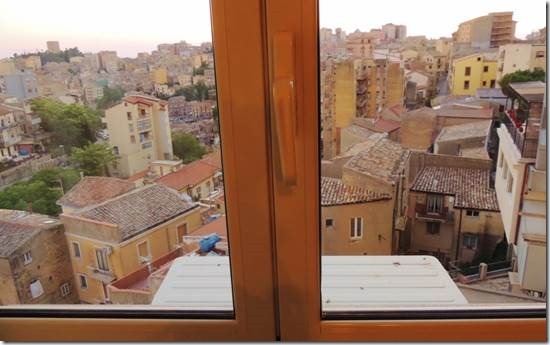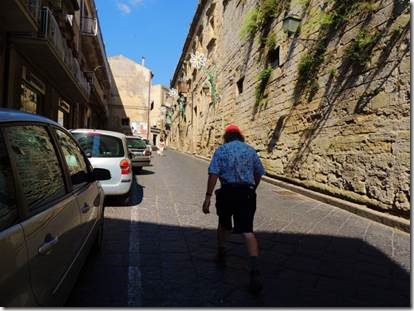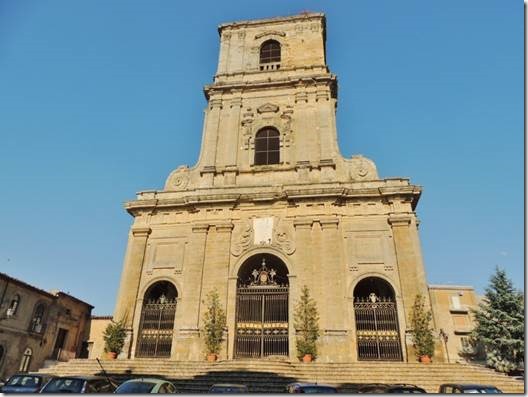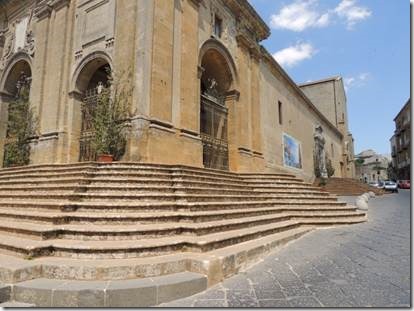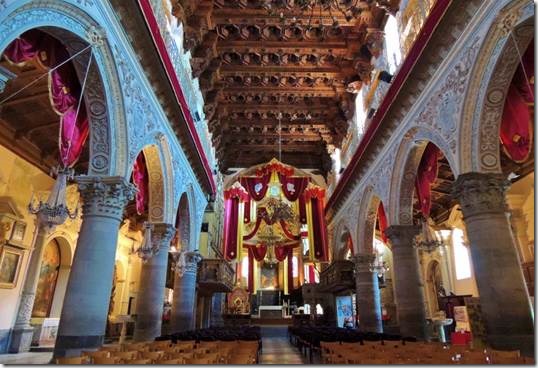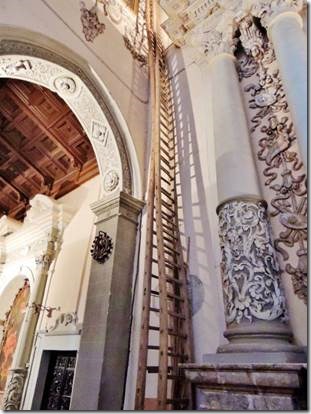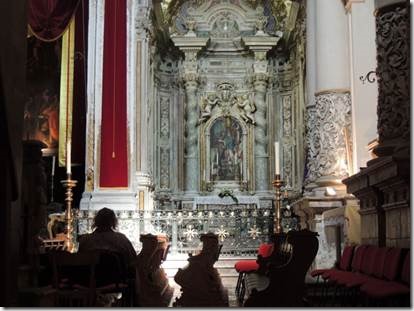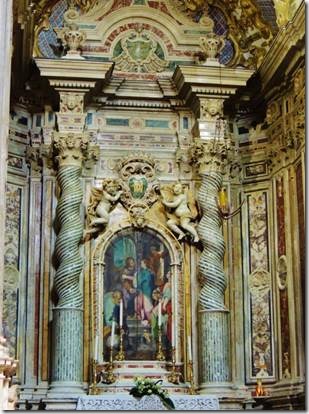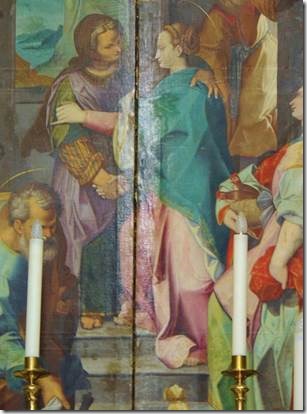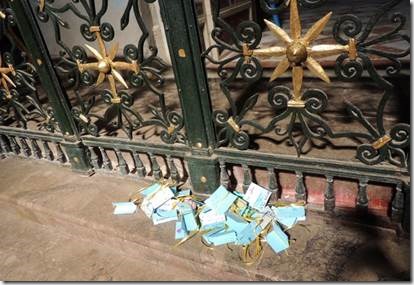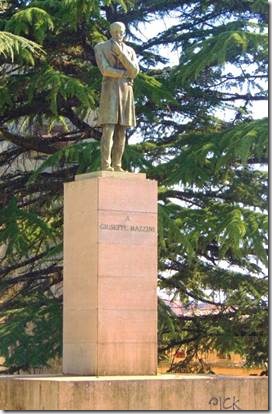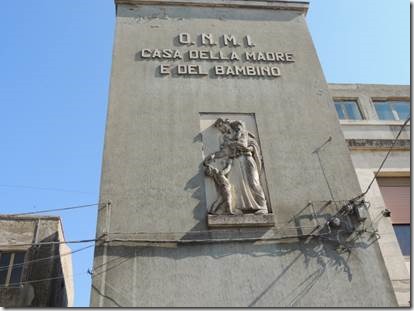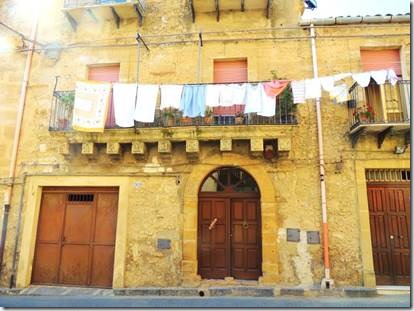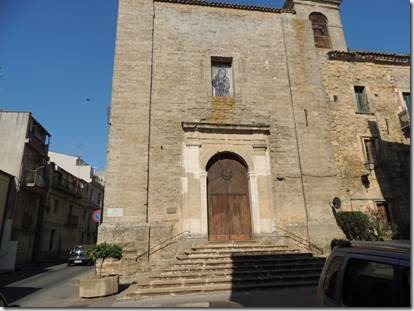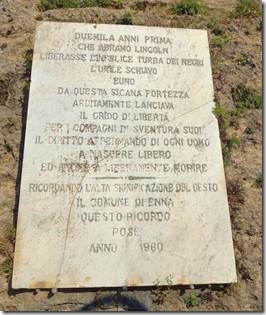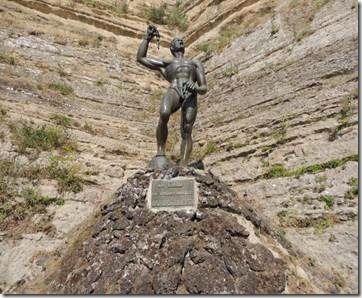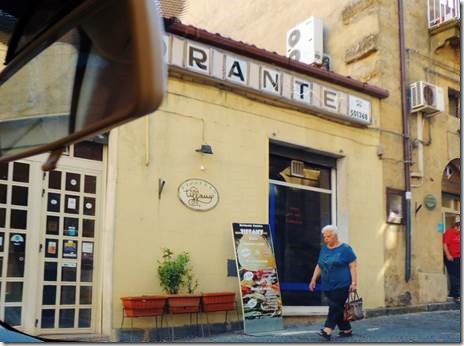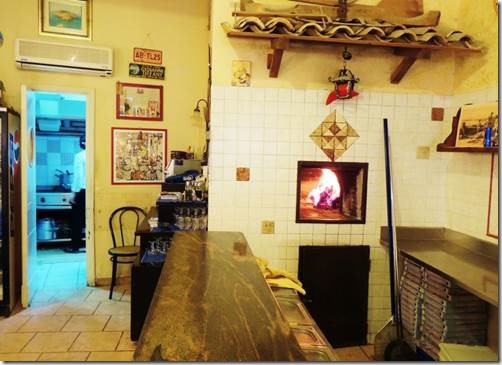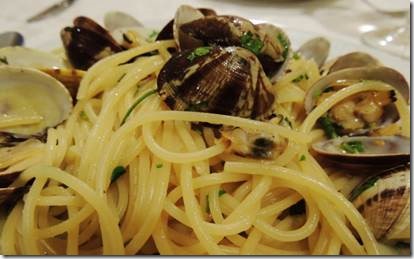First Day of Summer
Buona Sera
We returned late yesterday afternoon from our road trip and will be here several more days until the weather forecast for our passage to Tunisia improves. Hopefully I can catch up with these emils. I took so many photos of Enna from our hotel room window that I can’t choose which so send so might just send them all. I could have stood there for hours watching the light change and spying on folks down below with my zoom lens. I loved Enna so though it wasn’t the first place we visited, I’m writing about it first. As for the photos, I am trying different settings on the camera and don’t think they did just a great job. So much bright light here too.
Ru
Enna Listening to Church Bells
We went to Enna twice; the first time not very successfully as we at first couldn’t find any place to stay; and then when we did, they didn’t appeal to Randal. (Long story that no longer matters.) But as Enna was # 1 on my list, Randal suggested we make a second attempt. Touring around Turkey with no reservation worked just fine. Greece, not so fine as we had to break out of our room to actually leave our “hotel.” But Sicily, wow! Way other story. Especially in less touristy places like Enna and S.Stephano di Camastra. We discovered that many B&Bs are locked up tight; you must call on your mobile phone the number posted at the door. We have no Sicilian phone card, (our stay here will be so short) so calling the number was not an option. You can press a button similar to a doorbell and speak to their mobile phone or house phone, but only if someone actually answers. The one hotel we finally found that was not locked up, was more than we normally spend when we travel. I should have put my foot down and said; “too bad I want to stay here.” But I didn’t which was ironic as we were in the place where Demeter / Ceres had her temple and we know what a tough lady she was. We have 6 months of winter thanks to her fury at the abduction of her daughter Persephone by Pluto/Hades, the god of the Underworld. (While in Hades Persephone ate 6 pomegranate seeds so we have 6 months of winter.) My reasons for wanting to visit Enna? In the Netsel Marina library, I’d found the book, Desiring Italy : Women Writers Celebrate the Passions of a Country and Culture. There was an excerpt from On Persephone’s Island : A Sicilian Journal by Mary Taylor Simeti about Enna with a “literary tour” plan. Plus I heard whispers of what I thought I remember from Sue Monk Kidd’s Traveling with Pomegranates about Demeter So I really only had lots of vague reasons for wanting to visit Enna. The consolation prize after our failed first attempt was that lovely dinner by the waterfront in Acireale where we spent the night instead. When we did actually return to Enna to the “splurge” hotel it was lovely and in the perfect location on via Roma just near the Duomo within walking distance of everything I’d come to see. Using the Simeti excerpt and the included “Literary Traveler” guide by anthology Editor Susan Cahill, I found my way along Via Roma from our hotel to the Duomo to Lombardi Castle to the Rocca di Ceres (Rock of Ceres.)
|
Enna on the hill “at almost 1,000 meters,” according to our Sicilian tour book. |
|
We arrived about 3 pm, starving, after a crazy day that involved a 3 hour drive from S. Stephano di Camastra to Palermo and then immediately away from Polermo to Enna. Driving into Polermo is insane. Driving into Polermo without a map, dictionary or a clue where you’re going; total madness!! I honestly thought there’d be a sign for the Capella Palatina or Monreale, but we saw none. Signage everywhere in Sicily is confusing. Polermo wasn’t tops on anyone’s list so skipping it was disappointing but not horribly disappointing. In comparison, returning to a doable sized Enna that we knew a bit and having a plan where to stay was a relief. We were starving because we’d failed on the autostrada to find a town with an open café for lunch so picked pretty much the first place we saw in Enna; a not-great Panini lunch. We next drove to our hotel, checked in and then went off to visit the Duomo just almost across the road. Actually just about everything I wanted to see was on Via Roma which made it easy not to get lost. |
|
Our key was the old fashion kind, made of heavy metal with a small ball attached. |
|
One of the views from our room. |
|
Walking up the narrow street to the Duomo |
|
“The Cathedral of Maria SS. is the Mother Church of the Visitation of Enna, 16 May 2008, was declared a UNESCO “Monument of Peace” and is one of the greatest expressions of art in the province of Enna.” http://www.sicilia360.it/en/provincia/enna-en/ The entire article is below. |
|
The front door looks pretty permanently shuts so you enter on the side just a bit further than the poster on the wall. |
|
Quite spectacular! |
|
Do you think this ladder is still used today? |
|
“The imagery is so different from the usual iconography of a Christian temple that it’s easy to believe the theory that the cathedral sits on the site of the temple of Demeter’s daughter Persephone. Spirals are prehistoric symbols of the mother goddess.” Susan Cahill’s “Literary Traveler” note. |
|
We saw notes in Ephesus asking help from Mary. |
|
After our visit to the Duomo Randal went back to our hotel; he had some computer work to do. I went on alone because there was no way to get lost; I only had to walk up the Via Roma and then back down the Via Roma. We’d eaten lunch at 3 pm so we wouldn’t need dinner until after 7 pm. That’s sort of late for us though it’s early by European standards. Hotel restaurants don’t even start serving until 8 pm. |
|
GIUSEPPE MAZZINI, (1805-1872) “The Beating Heart of Italy.” Statue in the plaza across from the Duomo “Giuseppe Mazzini, (born June 22, 1805, Genoa [Italy]—died March 10, 1872, Pisa, Italy), Genoese propagandist and revolutionary, founder of the secret revolutionary society Young Italy (1832), and a champion of the movement for Italian unity known as the Risorgimento. An uncompromising republican, he refused to participate in the parliamentary government that was established under the monarchy of the House of Savoy when Italy became unified and independent (1861).” http://www.britannica.com/EBchecked/topic/371294/Giuseppe-Mazzini |
|
Building of a social service agency |
|
Real Life Enna |
|
The plague on the wall was dedicated to S. Francesco di Paola Tomie dePaola was one of my favorite children’s book illustrators especially his character Strega Nona |
|
At the top of the hill Via Roma splits and you must go either left or right. There is a small plaza with two small food stands, tables and chairs. Just beyond that is Castello Lombardo and the Rocca di Cerere as well as the best views of the valley beyond and hill town Caltanissetta. Just outside the Castle is this statue of Euno. Euno leader of first revolt against the occupying Roman Empire in 135 BCE “The huge slave population of Sicily was made up of prisoners of war captured by the Romans in their wars in the east. Partly because of the impregnability of Enna, the Roman army did not defeat the slave rebels for two years. The plaque attached to the Euno memorial quotes Abraham Lincoln, who referring to the history of slavery, invoked the name of heroic Euno.” “Literary Traveler” notes Susan Cahill. I scouted out Castello Lombardo but decided to wait for Randal and a walk the following morning when we would also climb to the farthest point and visit the Rocca di Cerere . |
|
I returned to our hotel hot and tired. Time for a shower and a rest. Then it was time to go find dinner. Literally we had to go find it. We walked up Via Roma and then took a side path to a parallel road. There was one restaurant that said it would open at 6pm. It was 7pm and not open that we could see. So then we walked around the tiny plaza and back down Via Roma. The church bells started to ring and it looked like lots of folks headed for the Duomo perhaps for Wednesday evening mass? We did find this cute Trattoria/Ristorante and they happily served us though we were the only customers there. Later another couple came in, but they were the only ones. |
|
The burning pizza oven and the pizza paddles Spaghetti with clams and white wine our new favorite foods. |
|
I do write lots about food because that’s part of the fun of travel until you eat something bad and then it’s no fun at all. Thankfully Randal and I have only experienced the bad once each. And who’s not interested in food? Anyway, I got this hilarious email from a bike pal in Salem, VA. “OK. Your assignment is to sometime in the future do a posting that has neither pics or text of great food and see if anyone notices. Wait a minute. That could be the secret code you could use if you are kidnapped but forced to continue acting "normal" while you smuggle narcotics or plutonium or something. You could stop writing about and sending pics of food, we would notice the pattern and call the gendarmes to rescue you because we’d know SOMETHING IS WRONG.” D.H. |
|
I must say food in Turkey was easier and lots cheaper than here in Sicily. Lots more fresh salad veggies served and fewer surprises when you order. We used to believe that a Panini was a grilled sandwich. Here it’s just a sandwich on whatever bread they happen to serve it on. And there seems to be more bread than filling. Breakfast seems to be mostly sweet stuff and coffee though the hotel breakfast in Enna had lots more variety. On the streets it’s mostly coffee and some kind of roll. Now however, I like my flaky croissant filled with Nutella for breakfast! So to answer my friend Har who asked how I stay thin; this trip I didn’t. I weigh a few pounds more than when we left. But the pasta here tastes good! It’s not just something to hold up tomato sauce. Often there’s just olive oil and herbs with the pasta. I think they add some of the clam broth too. And the pasta noodles are still chewy and taste good. I bought some today. There are a zillion kinds with dozens of brands. I watched what a woman who seemed to know what she was doing bought and I got some of that. I did the same with the shelves of olive oil to add Italian/Sicilian olive oil to our collection. I certainly do understand Elizabeth Gilbert and her acceptance of “big girl pants” while in Italy. |
http://www.arcojournal.unipa.it/pdf/mazzara_24_11_03.pdf talks more in depth about mythology and the myth of Demeter and Persephone.
http://www.timesofsicily.com/ennas-mythical-past/
On a clear day, the elevated city of Enna is visible from much of central Sicily. However, winter mists often shroud its ancient secrets. Described as the island’s navel, Enna lies at its geographical heart and at the core of one of its most enduring myths: the story of Demeter and Persephone. The fabled origins of Sicily’s fruitful abundance is wrapped up in this tale which has inspired poets and writers for centuries, and within the story’s many twists and turns there is a dark metaphor for our modern age.
Demeter, otherwise known as Ceres, was the sister of Zeus. She had a daughter, Persephone, or Proserpine to the Romans, who was the maiden of Spring. The fertility of the primavera siciliana owed its spectacular profusion to their kindly attentions; but an unseen threat lay in wait in the guise of Pluto, god of the underworld.
Pluto lusted after Persephone, the very embodiment of lightness and floral beauty. His brooding obsession compelled him to drag her down to the stygian gloom of his realm. Demeter searched in vain for her lost daughter, eventually abandoning herself to disillusion and pain. Her reproach to the cruel world was to withhold the bounties of the harvest. Directed by the Syracusan, Arethusa, from her underground stream, Demeter discovered the whereabouts of her daughter and pleaded with Zeus for her safe return. Persephone’s release was on the condition that she had refrained from eating. Sadly, she had already consumed the pulp of a pomegranate seed. (Many versions of this story mention 6 pomegranate seeds. RJ) This led to a good old-fashioned compromise: she would spend half the year in the sunlit uplands and half in the kingdom of Hades, during which time the still peeved Demeter would continue to withhold the fruits of the soil. So runs the legend… but what traces remain in the earth of modern Sicily, and what impact did it have for the art and literature of future generations?
Today, approaching Enna from the Catania – Palermo autostrada, it’s easy to see how it commands a striking view of the surrounding countryside. The motorway slip road directs you to a weaving mountainside helter-skelter which ascends the outcrop in short bursts. Enna’s maze of twisting streets will eventually lead you to the impressive Castello Lombardia at the pinnacle, where the nearby Rocca di Cerere surveys its fertile dominion. Adherents worshipped Demeter (Ceres) for centuries on this very spot. Little of the classical architecture is left, but that is perhaps fitting for a goddess of nature: the view to Etna and beyond represents her heritage. But it is a fragile Eden as the myth itself suggests.
The light imprint of Persephone’s footsteps can also be found in the neighbouring town of Pergusa. Lake Pergusa is Sicily’s only remaining natural lake and was the location for her disappearance. Part of the area is a protected nature reserve and part given over to the more earthly pursuits of motor racing. The archaeological zone, Cozzo Matrice, has a collection of ruins dating from the period including a temple dedicated to Demeter. Diodorus Siculus, the classical Greco-Sicilian historian, even mentions it as the site where Pluto’s chariot emerged from the underworld.
The myth has haunted the imagination of many, Sicilians and foreigners alike. Italians even drink a Ceres beer! The story had an inevitable attraction for the Romantic poets of 18th and 19th century England. The Italianophile, Percy Bysshe Shelley, was drawn to it like a moth to a flame. His lines ‘Sacred Goddess, Mother Earth / Thou from whose immortal bosom / Gods, and men, and beasts have birth…’ amply reflects its elemental quality. Coleridge, who spent time in Messina and Syracuse, was more taken with the Arethusan aspect of the legend. In one of the most famous poems in the English language, seemingly set in far off Cathay, he can’t resist a reference to her underground waters. ‘In Xanadu did Kubla Khan / A stately pleasure-dome decree / Where Alph, the sacred river, ran / Through caverns measureless to man…’ (This was a favorite poem of my mother’s. RJ)
Virgil, Ovid, Thomas Moore, John Milton… the list of devotees is endless. One of the more interesting modern references was made by the Sicilian-American writer, Gioia Timpanelli. In her book, Sometimes the Soul, one of her characters, Costanza, conjures up images of Enna’s flower-covered fields. Artists have been no less reticent in their depictions. From Bernini to the Anglo-Italian, Dante Gabriel Rossetti, Demeter and her daughter have continued to inspire.
All over the world, we are so reliant on the good intentions of Demeter, that the potential of her permanent withdrawal still causes us anxiety. In part, we seem intent on causing this to happen. Maybe we are the pestilential Pluto, blindly dragging our fragile Persephone to the depths with little thought for the consequences. Yet we also have the capacity to be Zeus, capricious but capable of arbitration, leaving Demeter to spread the universal joys of the primavera siciliana.
http://www.timesofsicily.com/ennas-mythical-past/
The Cathedral – Enna
The Cathedral of Maria SS. is the Mother Church of the Visitation of Enna, 16 May 2008, was declared a UNESCO “Monument of Peace” and is one of the greatest expressions of art in the province of Enna. The Cathedral is located in the historical centre of the city near the Lombardia Castle and faces Mazzini square, which occupies the entire north side. The cathedral was erected in 1307 on the ruins of the Temple of Proserpine, by order of Eleanor of Anjou, wife of Frederick III of Aragon, for the birth of their son Peter, but in1446 a major fire destroyed all except an apse and part of the right side, and in 1447 Pope Eugene IV proclaimed a Jubilee duration of 7 years to raise the necessary funds for the reconstruction of the important place of worship. Due to a lack of money collected, King Alfonso of Aragon sold various lands and with the proceeds, in the sixteenth century, was able to rebuild the church. At the end of 1574 was completed by the famous builder of the city of Messina, Jacopino Salemi, the elegant portal of St. Martin, enhanced by slender columns culminating in original capitals, which is located in the right side of the church, where at the transept opens the “Holy Door”. Built on a plateau cut on the rock of tufa yellow, its bell tower, overlooking the wide valley that divides the nearby Enna from Calascibetta. The building is surrounded by large steps in which there are access doors and porch, which, with its exterior forms the facade. The Cathedral is made up of eight pillars supporting the tower, adjacent to the north wall of the building is a space where once stood a cemetery behind the apse there is a small garden where once there ‘was the old Gothic sacristy of which remain today only a bow and a shelf. The front of the Cathedral Church looks very majestic and impressive, as realized following fees anomalous dimensions in the trends of the time: a long flight of steps to reach a portico with three portals, encircled by six columns, and above the base develop other two levels of the bell tower, with two round-headed windows full of ornaments, decorations, human faces, pilasters and columns in Doric and Corinthian. Remarkable is the Door of the Jubilee, which is reminiscent of the Jubilee proclaimed in 1447 by Pope Eugene IV, and now walled up, on the right side, which is an excellent example of Sicilian Gothic style, with 6 columns and capitals decorated with a beautiful arch surmounted by the statue of Madonna and Child surrounded by a round arch and friezes zigzag alternating with leaf motifs. On the other side door is the Sottana Door, dating 1447, bearing two pairs of Corinthian columns surmounted by a pediment crowning and a beautiful marble bas-relief depicting the late Renaissance “Saint Martin and the poor” who divides his cloak with the poor. The interior of the cathedral is a Latin cross, with three naves divided by pointed arches, supported by columns of black basalt, with capitals decorated with leaves, scrolls and reliefs of animals and saints. The wooden ceiling of the nave is a caisson and rosettes of walnut with winged heads grotesque and beautiful decorations, the work of Guido Di Scipio. In the left aisle we see the pulpit of the seventeenth century. a polygonal shape with side ladder, canopy friezes, angels and cherubs, marble white and coloured. Behind the high altar depicting scenes from the Old and New Testament. Very beautiful are the wooden works such as the cabinet where the sacristy are scenes from the life of Jesus Of great value is the chapel with the statue of Our Lady of the Visitation embellished with diamonds and coloured gemstones. Inside, we find of great importance: the font, the rich portal with a bas-relief illustrating San Martino del Gagini, the frontal, numerous paintings by various authors. http://www.sicilia360.it/en/provincia/enna-en/

